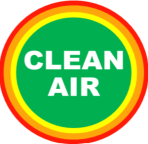
MESA DUST REDUCTION NEWS
APCD Provisionally Approves the SVRA 2024 Dust Control Work Plan
On September 17, 2024 the San Luis Obispo County Air Pollution Control Officer (APCO), Gary Willey, granted provisional approval of State Parks Provisional 2024 Annual Report and Work Plan (ARWP). (See the Provisional Final Draft ARWP and the APCO provisional approval letter .) This approval was conditioned on the following: • If the Plover Exclosure area, in whole or in part, is reopened to public vehicular access, State Parks shall simultaneously implement District-approved dust controls sufficient to offset the resulting increase in emissions. If feasible, a final set of PI-SWERL measurements should be taken in the area before it is reopened. • The emissions model shall be refined as proposed in the ARWP, including incorporating 2024 PI-SWERL measurements and expanding the modeling domain. These refinements shall be completed in time for updated modeling results to be included in the 2025 ARWP and for additional dust controls to be designed and installed by the expiration of the SOA if the refined modeling suggests that they are needed to comply with the SOA. The Concerned Citizens for Clean Air (CCCA) steering committee believes the 2024 ARWP to be seriously lacking, and the proposed 2025 work plan insufficient. The reasons are expressed in a letter to the APCD Hearing Board. ( See the CCCA letter .)Hearing Board Extends Its SVRA Dust Control Oversight to 2028
On March 15, 2024 APCD Hearing Board conducted a public workshop and review of the Oceano Dunes SVRA 2024 Dust Control Annual Report and Work Plan (ARWP). State Parks made a presentation on the progress of dust mitigation measures and the 2025 dust control work plan. The work plan include planting native vegetation in some existing dust control areas, and maintaining dust control areas already planted. State Parks plans no additional control areas. Based on measurements of the surface emissivity of open areas and computer modeling of the predicted effects of installed dust controls, State Parks concludes that the emission reduction required by the Stipulated Order of Abatement (SOA) will be achieved when the vegetated areas mature. The analysis of emissions test data and computer modeling done by the Desert Research Institute show pre- disturbance total emissions were 166 metric tons per day, and while projected dust controlled emissions will be 148 metric tons per day (ARWP Table 2-9). Also, measurements of PM10 concentrations at the Cal Fire and Mesa 2 monitors, when adjusted for wind energy levels, show significant reductions have been achieved (ARWP Figures 2-28 and 2-29). Presentations by the Air Pollution Control Officer, Gary Willey, and a representative for the Scientific Advisory Group (SAG) generally supporting State Parks assertions were also made. A few public comments were also heard. After the public workshop portion of the meeting, the Hearing Board convened a formal hearing on a proposed modification of the Stipulated Order of Abatement, put forth by the Air Pollution Control Officer, Gary Willey. (See the SOA modification. ) After questions raised by board members were addressed, the modifications were approved by the board. This action extended Hearing Board oversight of the Stipulated Order of Abatement to 2028, and defers a final decision on the SOA required level of PM10 emissions reduction to no later than October 16, 2028. Meanwhile, emissions measurements, analysis and dust controls maintenance will continue, as well as the annual report and work plan approval process. In its letter to the Hearing Board, the CCCA expressed its concern that the SOA required modeling approach to demonstrating achievement of a PM mass emissions goal is too abstract and not easily understood and monitored by the public. The CCCA asked if it would be possible to establish a compliance standard based on measured downwind PM concentrations, similar to Rule 1001. Some Hearing Board members agreed, and the Board formally asked APCD staff to investigate the feasibility of establishing an air quality requirements compliance criteria based on measured fugitive PM10 concentrations, and to report back to the board as early as possible in 2025.

Mesa Air Facts!




